|
Displaying items by tag: American Folk Art Museum
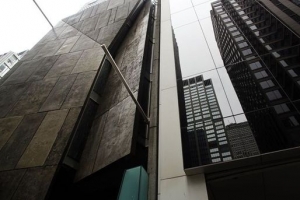
New York’s Museum of Modern Art is reconsidering its decision to tear down the American Folk Art Museum’s former home on West 53rd Street in Manhattan. The famed institution received a wave of backlash after they announced that they would raze the building as part of its upcoming expansion.
On Thursday, May 9, 2013 MoMA officials announced that they have hired the New York-based architecture firm Scofidio + Renfro to helm the museum’s upcoming redesign and will consider plans that include the incorporation of the monumental building rather than its demolition. MoMA decided to level the Folk Art Museum’s former home because officials felt that its appearance did not mesh with their sleek, glass aesthetic. The structure, which is next door to MoMA, is also slightly set back from the museum’s main building making logistical issues problematic.
The Folk Art Museum erected the structure in 2001 and it quickly became a Midtown landmark thanks to its distinct design and sculptural bronze façade. However, in 2011, after a spate of financial troubles, the Folk Art Museum decided to move to a smaller location and MoMA purchased the building. After MoMA made the shocking announcement in April, many architects and designers, including the Architectural League of New York, voiced their opposition to the demolition plan.
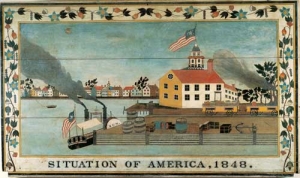
In an effort to curb the massive debts accrued by the American Folk Art Museum’s former chairman, Ralph Esmerian, the institution has decided to sell over 200 works from its collection at an auction at Sotheby’s. Esmerian, the former owner of the jewelry company Fred Leighton, is currently serving a six-year jail sentence for wire fraud and other charges.
In 2005, Esmerian promised to donate 263 works from his illustrious collection to the Folk Art Museum. However, he used some of those same works as collateral to secure multi-million-dollar loans with Christie’s and Sotheby’s. Late last month, Manhattan’s U.S. Bankruptcy Court arranged a settlement with the museum allowing the Folk Art Museum to keep 53 of the promised works as long as they enhance the institution’s collection and aid its educational mission. The remaining works, which include paintings, sculptures, scrimshaw, and needleworks, will be sold at Sotheby’s.
The trustee responsible for liquidating Esmerian’s estate has decided to sell the remainder of the collection through Sotheby’s, much to Christie’s dismay. Christie’s filed an objection to the settlement on March 15, 2013 claiming that Sotheby’s intimidated the trustee into choosing them to host the important auction.
The Esmerian sale will be held in December 2013 or January 2014 and the profits will go towards repaying the creditors the former chairman defrauded.

The nonprofit Architectural League of New York is the latest party asking the Museum of Modern Art to reconsider their decision to raze the former home of the American Folk Art Museum. The organization wrote an open letter signed by members of its board of directors to MoMA on Monday, April 22, 2013. Prominent architects such as Richard Meier, Thom Mayne, Steven Holl, Hugh Hardy, and Robert A.M. Stern voiced their support against the demolition of the building, which was designed by notable New York-based architects Tod Williams and Billie Tsien.
The monumental building, which features a sculptural bronze façade, was erected twelve years ago on West 53rd Street by the American Folk Art Museum. After the institution fell into financial turmoil, the building was sold to MoMA and the Folk Art Museum moved to a smaller location. Now, as plans for an expansion gain steam, MoMA has announced their decision to level the building. Officials justified the ruling by claiming that the Folk Art Museum’s former home didn’t mesh with MoMA’s sleek glass façade and that structure’s location was logistically problematic as it is slightly set back from MoMA’s main building.
The decision to demolish the structure, which has quickly become a Midtown landmark, has been met with a wall of opposition. Last week, a New Haven, CT resident, Robert Bundy, launched a petition against MoMA’s decision and garnered over 2,000 signatures in a matter of days.
As it stands, MoMA expects to begin renovations in 2014 by which time the Folk Art Museum’s former home will be destroyed.

After news spread that New York’s Museum of Modern Art planned to tear down the former home of the American Folk Art Museum on West 53rd Street in Manhattan, opponents launched a petition asking MoMA officials to reconsider the decision.
The petition was launched by New Haven, CT resident, Robert Bundy, and has accrued over 2,000 signatures. In a letter written to MoMA’s director, Glenn D. Lowry, and the museum’s chief architecture curator, Barry Bergdoll, Bundy asks that MoMA preserve the building rather than raze it, which he claims would be an architectural loss for the city of New York.
The building in debate was designed by notable New York-based architects Tod Williams and Billie Tsien to house the Folk Art Museum. The project was completed in 2001 but after falling into financial turmoil, the Folk Art Museum decided to sell the building to MoMA and move to a smaller location.
The decision to level the structure, which features a sculptural bronze façade, is part of MoMA’s overarching expansion plans. Officials claim that the former Folk Art Museum building doesn’t mesh well with MoMA’s neighboring sleek, glass façade. The Folk Art building is also set back slightly from MoMA making expansion logistics more complicated.
In Bundy’s letter he writes, “We ask that the Museum of Modern Art reconsider its position and save the former American Folk Art Museum. The destruction of the building will result in MoMA no longer being regarded as a protector and promoter of the arts.” The petition can be found on change.org’s website.
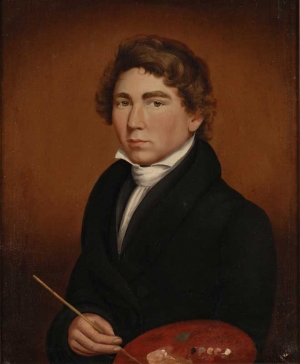
New York’s American Folk Art Museum has mounted an exhibition devoted to the notable Boston-based itinerant folk portraitist William Matthew Prior (1806-1873). Artist and Visionary: William Matthew Prior Revealed was organized by the Fenimore Art Museum in Cooperstown, New York and features over 40 oil paintings spanning Prior’s career from 1824 to 1856.
Prior, who moved from Maine to Boston in 1840, is best known for his paintings of working-class Americans, a demographic that had previously been overlooked by artists. Prior developed a simple, straightforward style to meet the tastes and means of his humble clientele, which often included families and children. However, Prior went on to depict a diverse range of sitters that included himself, a famous preacher, and a number of African Americans. Prior often shifted his style from modest to elaborate based on his subject.
Artist and Visionary: William Matthew Prior Revealed, which is the first comprehensive museum retrospective to focus on Prior, will be on view through May 26, 2013.
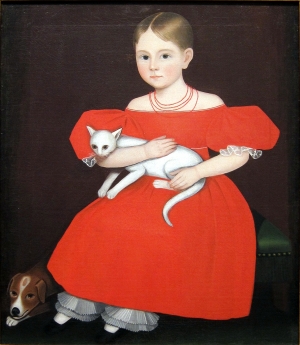
When Ralph Esmerian, owner of the jewelry company Fred Leighton, filed for bankruptcy and was sentenced to six years in jail for fraud in 2011, the American Folk Art Museum felt the repercussions. Esmerian, a prominent donor and former chairman of the institution, had promised the museum 263 works from his illustrious collection. Since Esmerian’s downfall, the museum has been working with a trustee of the case to reach an agreement, which was recently realized.
The settlement between the Folk Art Museum and Esmerian states that the institution is entitled to 53 of the artworks he promised to donate. While the chosen pieces are yet to be specified to the public, they were selected for their exceptional quality and include portraits, needleworks, fraktur, sculpture, pottery, and scrimshaw. The retained works will enhance the museum’s collection and aid its educational mission.
The Folk Art Museum will be forced to part with the other 210 promised works, which will most likely be sold at auction in an effort to settle other bankruptcy estate claims.
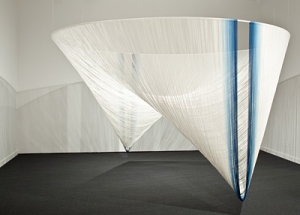
The Museum of Craft and Folk Art (MOCFA) will be closing its doors on December 1, 2012, the date marking the institution’s thirtieth anniversary. Founded in 1982 by craft artist and well-known sculptor, Gertrud Parker, MOCFA is the only folk art museum in Northern California.
After three decades, the Museum’s overseers felt that their mission, to bring recognition and legitimacy to craft and folk art in the contemporary art arena, had been achieved. The poor climate for smaller art institutions was undoubtedly a contributing factor.
Although the art market and leading museums now embraces contemporary artists who borrow from craft traditions, the innovative and daring venues that helped these artists get there are suffering. For instance, this past summer amid financial troubles, the American Folk Art Museum in New York was forced to sell its building on 53rd Street to the Museum of Modern Art and move to a smaller venue.
The MOCFA has exhibited hundreds of artists and significant local and national craft and folk art collections over the years. The Museum is devoted to collaborating with artists on commissions of new work as well as promoting artist-led projects and public programs. MOCFA has worked ardently to provide a place for makers and artists to come together and create, discuss, and learn. The Museum’s final exhibition, Fiber Futures: Japan’s Textile Pioneers, will be on view from now until December 1.

After recent financial struggles, the American Folk Art Museum received a hefty gift from David L. Davies, a former trustee and noted folk art collector who passed away in March, and his partner Jack Weeden. The $1 million bequest came as a welcome surprise after the recent hardships the museum has endured.
In July of 2011 the Folk Art Museum was forced to sell their 53rd Street home to the Museum of Modern Art in order to pay back a nearly $32 million debt related to a bond payment. In addition to vacating their flagship location, the museum's director, Maria Ann Conelli, resigned and the museum canceled a highly anticipated exhibition in Venice. The museum was in need of the good news.
Now located in a smaller building in Lincoln Center, the Folk Art Museum will use the money to establish the David Davies and Jack Weeden Fund for Exhibitions. Davies, a trustee of the museum for two decades, also donated a number of artworks to its collection including Morris Hirshfield's The Artist and His Model (1945). Hopefully the positive news signals fruitful times to come for the Folk Art Museum.
The American Folk Art Museum barely avoided extinction last year when it was forced to sell its ill-suited building on West 53rd Street in Manhattan and retreat to its much smaller branch space at 2 Lincoln Square. Now it is modestly spreading it wings and trying to set more of its great collection before the public by collaborating with other institutions.
It has, for example, lent 14 works to the Metropolitan Museum of Art for its new American Wing galleries. Another fruit of this approach is the exuberant and wide-ranging “Compass: Folk Art in Four Directions,” a dense exhibition of nearly 200 works shoehorned into four galleries in the early-19th-century row houses that are now the home of the South Street Seaport Museum.

Having seriously weighed dissolving and transferring its collections to another institution because of financial problems, the American Folk Art Museum on Wednesday evening decided to continue operating at its current location at Lincoln Square in Manhattan with the help of financial infusions from trustees and the Ford Foundation.
“We are confident that we’re embarking on a prudent course with the facilities that we have and the staff that we have,” Edward Blanchard, who was elected the museum’s new president on Wednesday, said in an interview. “I think we’re going to do some very exciting things.”
Mr. Blanchard declined to specify the dollar amount of the donations that appear to have saved the day.
The museum had come to a sorry pass, having defaulted on its construction bonds and moved into its old, smaller space near Lincoln Center. It sold its building on West 53rd Street to the Museum of Modern Art to pay off its debt; it has been closed since July. The museum’s staff, once at 50, is down to a dozen, and its budget is $7 million, down from $10 million in 2009.
The building on 53rd Street opened in 2001 after a renovation by Billie Tsien and Tod Williams. To finance the construction, the museum borrowed $32 million by issuing bonds through the city’s Trust for Cultural Resources, a public benefit corporation that helps cultural institutions borrow money for capital projects. The debt payments on the bonds were significant, about $3 million a year, and in 2009, the museum defaulted on the debt, the first institution that borrowed through the trust to do so.
|
|
|
|
|